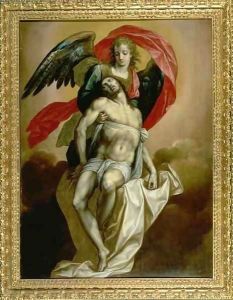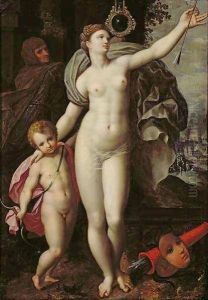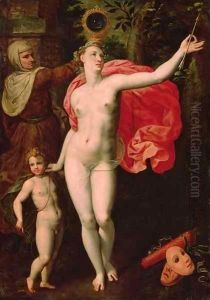Jacques de Backer Paintings
Jacques de Backer was a Flemish mannerist painter and draughtsman who was active in the second half of the 16th century. Unfortunately, due to the scarcity of documented evidence, his exact birth date remains unknown, and details about his life are sparse and often speculative. It is believed that he was born in Antwerp, which was a significant center of art and commerce during that period, and where he likely received his artistic training.
De Backer is known to have been a productive artist, although no paintings are firmly attributed to him, largely because he did not sign his works. His oeuvre has been reconstructed on the basis of a series of drawings that were once attributed to him and which served as designs for prints. He was thought to have been influenced by the work of Italian masters and the Roman school, as well as by his contemporaries in the Low Countries, such as Pieter Bruegel the Elder and Maarten de Vos.
Jacques de Backer's work is characterized by its complex compositions, often filled with numerous figures and detailed iconography, which is typical of the mannerist style that was popular in Europe at the time. Themes from mythology and the Bible were common in his paintings, and he was known for his ability to convey dramatic intensity and movement. His works also reflect the transition from the High Renaissance style of balanced compositions and harmonious proportions to the more emotionally charged and dynamic mannerist aesthetic.
Despite the fact that Jacques de Backer's life and works are not extensively documented, he is considered to have been a significant figure in the Antwerp art scene of his day. His death is presumed to have occurred around 1580, but like his birth, the exact year is not precisely known. The legacy of de Backer's artistic style contributed to the rich tapestry of Flemish art and provided a bridge between the Renaissance and the Baroque periods that followed. Art historians continue to study his works and their impact on the evolution of European art.


